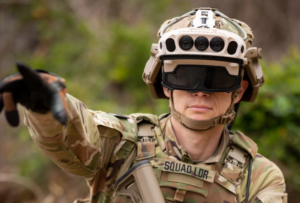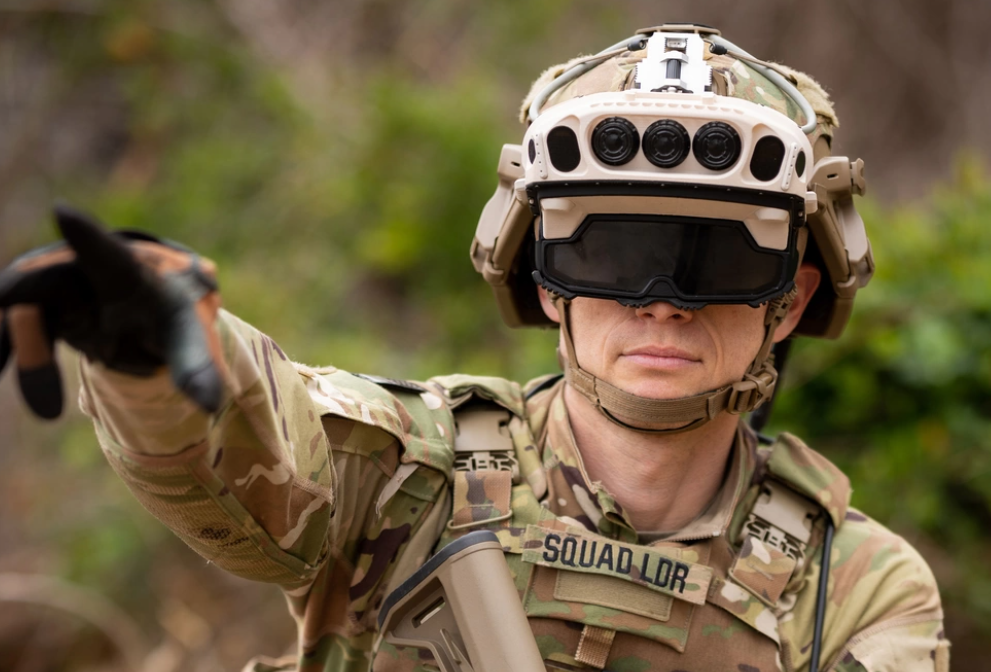The Army plans to award prototype agreements in late August for the Integrated Visual Augmentation System (IVAS) follow-on effort, recently rebranded as Soldier Borne Mission Command (SBMC).
A new notice published last week lays out an estimated timeline for the planned open competition for SBMC prototyping, with the Army looking to solicit white papers and then hold hardware demonstrations in late May before releasing a request for prototype proposals in mid-June.

“SBMC is a new effort to develop a fused digital awareness system optimized to emerging modular sensor technologies while backwards compatible to the Android Tactical Assault Kit (ATAK) architecture. SBMC will be the Army’s future day/night situational awareness and mission command platform for company-level and below dismounted operations,” the Army writes in the notice.
After releasing a Request for Information for the IVAS Next effort in January, the Army published an update in March noting the rebrand to SBMC and detailing an intent to award prototype details with an expectation to have test systems delivered seven months later (Defense Daily, March 11).
The Army said it plans to award “one or more” vendors Other Transaction Authority agreements for SBMC prototyping and that the number of deals “will be dependent on available funding.”
In the update published in March, the Army said it would assess industry’s sample hardware systems against technical requirements for low light sensor performance, thermal sensor performance, display performance, human factors, power requirements, weight and weapon systems compatibility.
After evaluating white papers, the Army said it will invite select vendors who detailed solutions “of high technical merit” to conduct in-person solution demos and presentations at Fort Belvoir in Virginia.
“Following evaluation of white papers, solution demonstrations and oral presentations, favorable vendors will be requested to submit formal technical and cost prototype proposals and to enter negotiations for OTA terms and conditions,” the Army writes in the new notice. “The [Army] reserves the right to limit the number of companies invited to submit a proposal.”
In March 2021, the Army awarded Microsoft [MSFT] a deal worth up to $21.9 billion over the next 10 years to move the IVAS augmented reality headset program from rapid prototyping into production (Defense Daily, March 31, 2021).
Following an operational test with the initial 1.0 version of IVAS in June 2022, Army officials detailed a plan to adjust the program’s timeline to address reliability, low-light sensor performance and form factor issues identified during the evaluation, and in early January 2023 awarded Microsoft a $125 million deal to work on developing an upgraded IVAS 1.2.
Anduril Industries, in a new agreement announced last month with Microsoft, is set to take over as the prime contractor for the current IVAS program (Defense Daily, Feb. 11).
Under the arrangement, Anduril would be responsible for building IVAS 1.2 and leading future hardware and software development of the new mixed-reality headsets while Microsoft would shift over to managing the cloud computing and artificial intelligence-related aspects of the program.
Palmer Luckey, founder of Anduril, told reporters at the time he believes the Army is looking at taking a “family of systems” approach with IVAS Next, now SBMC, that could involve building out an ecosystem with a “proliferation of different devices that share a common architecture and common application layer.”
“My personal vision for IVAS, and one that I have walked through with Army leadership and they are very supportive of, is that IVAS as a whole, whether it’s through this contract, IVAS Next or something else, is it is going to become a family of systems made by a variety of different companies,” Luckey said.
Luckey added he had already discussed the opportunity with potential partners in the AR/VR space, including some that would “normally never consider” working on programs such as IVAS or IVAS Next.
